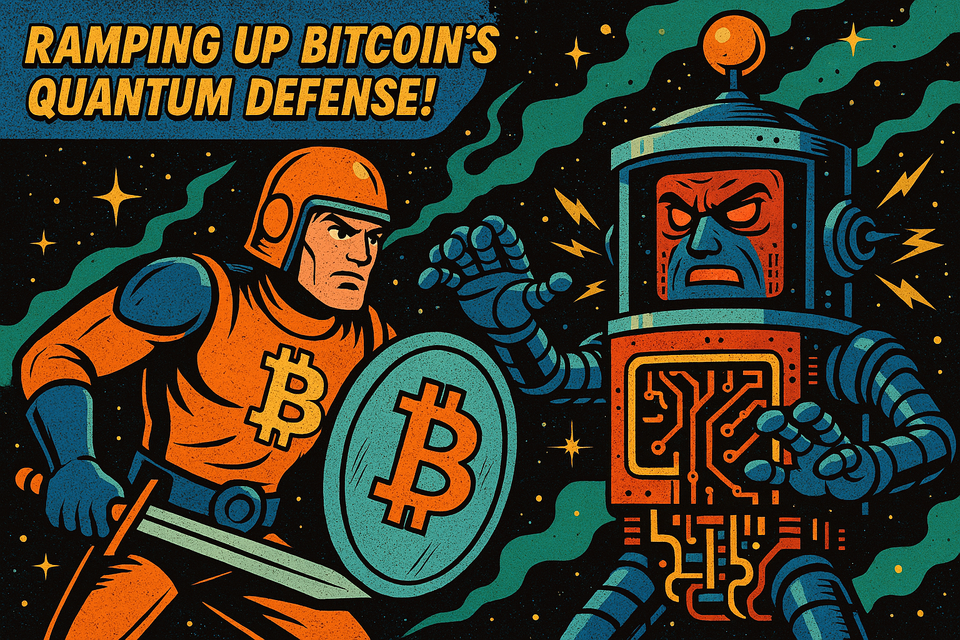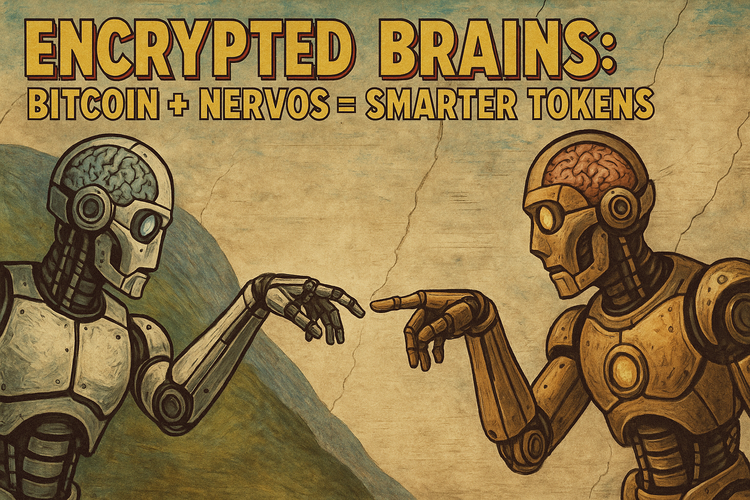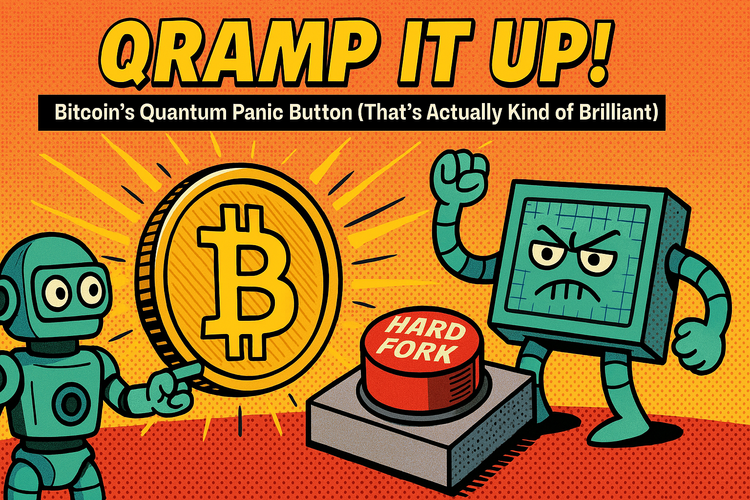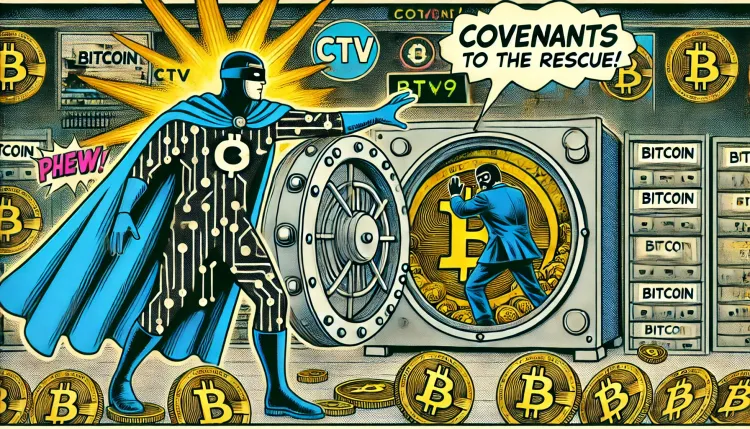Quantum 2: Bitcoin Strikes Back

Okay, so last time on Quantum vs. Bitcoin, we talked about qubits, ghosts called "decoherence," and how cracking Bitcoin might need a computer built by Doctor Strange.

But since then? Things have gotten spicier.
Google flexed its Willow chip. IBM keeps whispering about “quantum utility.” And folks are throwing around numbers like “13 million qubits” like that’s something you can order on Amazon Prime.
So here we are… part 2 of the Bitcoin vs. Quantum Saga — aka:
“Honey, I Shrunk the Blockchain”
🚨 Recap: Why Are We Even Freaking Out?
Bitcoin uses SHA-256 and elliptic curve cryptography (ECC). These are like Fort Knox... if Fort Knox were made of math.
But quantum computers don’t play by our rules. They use qubits—which can be both 0 and 1 at the same time (spooky), and can become entangled (spookier). Using tricks like Shor’s Algorithm, they could one day reverse engineer your BTC wallet’s private key like it’s a Sudoku puzzle.
Still, as of today? No quantum computer has successfully cracked SHA-256. Not even close.
👀 But Then Came Google’s Willow Chip…
Back in December, Google dropped a paper on their new 70-qubit chip named Willow. It’s sleek, shiny, and... still not a Bitcoin-killer. 😅
Here’s the quote from The Verge that sums it up:
“Willow can’t break RSA. Not even close.”
— The Verge, Dec 2024
Cool. But also... why name it Willow? Couldn’t they call it Satoshi Slayer just to keep things exciting?
🧠 Quantum Computers Are Still Clumsy Toddlers
Let’s be real. To break Bitcoin in a single day, you’d need 13 million stable, error-corrected qubits. Google’s Willow? Just 70. IBM’s Quantum System Two? A couple hundred-ish.
Also: even if they could build that kind of machine, they’d need flawless quantum error correction — aka babysitting your quantum circuit while it throws a tantrum every 2 milliseconds.
TL;DR: It’s like trying to defuse a bomb using spaghetti.
🔐 Meanwhile, Bitcoin’s Team is Already Cooking Defense Plays
You know that one over-prepared friend who carries pepper spray, a Swiss Army knife, AND Band-Aids in their fanny pack?
That’s Bitcoin devs right now.
They’re looking at:
- Lattice-based crypto (confusing AF, but quantum-safe)
- Hash-based signatures (yes, like Lamport)
- Kyber (not a Star Wars planet—actually a NIST-approved post-quantum key mechanism)
Even the US gov is in on it. NIST picked four post-quantum algorithms in 2022. They're literally drafting the next-gen encryption as we speak.
💣 Real Talk: Bitcoin Probably Needs a Hard Fork Eventually
If the quantum threat ever becomes real (like, “we've got a lab in Zurich decoding wallets” real), Bitcoin will likely need a hard fork to switch over to quantum-proof keys.
This would be a HUGE event—think the entire network agreeing to re-upgrade its immune system. Miners, wallets, exchanges… everyone would have to play along.
The upside? Bitcoin is still early enough that this could totally work.
🧊 So What’s The Vibe Right Now?
Let’s steal a line from crypto.com:
“Bitcoin isn’t broken. But it isn’t invincible either.”
Quantum computing is real. It’s coming. But it's still in the awkward teen phase.
If we’re smart (and Bitcoin usually is), we’ve got a decade to adapt, upgrade, and meme through the panic.
✨ Notoko’s Quantum Take:
You don’t need to sell your BTC and go live in a cave.
But maybe… start keeping one eye on the quantum nerds. They’re cooking something. And when it’s ready, Bitcoin’s gonna need a whole new armor set.
Sources to keep your tinfoil hat shiny:
- The Verge: Google’s Willow Chip
- Crypto.com University: Quantum Threat to Bitcoin
- WSJ: Looming Quantum Threat to Crypto
Stay tuned for part 3: “Satoshi and the Quantum Gauntlet” 🤖⚡
💡 Subscribe to Notoko Bytes for more crypto chaos straight to your inbox! 🚀

Want to feature your brand on Notoko Bytes? 🚀 Contact us at ctrascend@gmail.com for sponsored posts!
Disclaimer
*The information and analysis provided in this article are intended for educational and informational purposes only and should not be considered as financial, investment, or professional advice. While our team strives to ensure the accuracy and reliability of the content, we make no representations or warranties of any kind, express or implied, about the completeness, accuracy, reliability, suitability, or availability of the information presented.
The content within this article may include opinions and forward-looking statements that involve risks and uncertainties. The blockchain and cryptocurrency markets are highly volatile, and past performance is not indicative of future results. Any reliance you place on the information presented is strictly at your own risk. Before making any investment decisions, we highly recommend consulting with a qualified financial advisor or conducting your own thorough research.
By accessing and using the information provided in this article, you acknowledge and agree that neither the authors, publishers, nor any other party involved in the creation or delivery of the content shall be held liable for any direct, indirect, incidental, consequential, or punitive damages, including but not limited to loss of profits, goodwill, or data, arising out of your use or inability to use the information provided or any actions you take based on the information contained within this section.*






